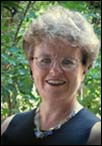Diana Walker—a photojournalist who has covered the White House for Time magazine for twenty years, who has been recognized by the World Press, the White House News Photographers Association, and the National Press Photographers Association, and who has had her photographs published in Paris Match, Vanity Fair, People, Life, and New York magazine—has donated her photographic archive to the Center for American History at the University of Texas at Austin. Although she retains copyright to her images, thousands of Walker’s photographs documenting the American presidency, the U.S. Congress from 1979-2000, world leaders, and historically significant events now will be preserved and made accessible in the Diana Walker Photographic Archive at the Center. The depth of the coverage in Walker’s archive is suggested in her new book Public & Private: Twenty Years Photographing the Presidency, which is featured in this month's Digital Journalist. Presidential historian Michael Beschloss, who wrote the foreword to the book, describes Walker's photographs as having had “a distinctive influence on the way we have viewed the presidents during the last quarter of the 20th century. . . . It is a tribute to Diana Walker's original eye, superb technical skill, and unexcelled personal diplomacy that she has so often won exclusive, behind-the-scenes access to these leaders and used it . . . to show us hidden, heretofore unseen facets of their personalities, character, and sometimes, senses of humor. . . . Looking through her body of work, it is startling to recognize how many of Walker's photographs have become iconic images in our national memory.” Growing up in Washington D.C., Diana Walker was steeped in the political environment—every four years her family took her to the presidential inauguration to celebrate her January 20th birthday. She became a photojournalist to observe and document politics in Washington. Her early non-professional work includes black and white photographs of the1963 civil rights march at the Lincoln Memorial and President Kennedy's funeral. By 1975, as a free-lancer for Washington Monthly, she obtained credentials to shoot in Congress and at the White House. Her work for the Monthly included assignments to photograph Washington journalists and politicians of the 1970s. Walker's first photographs for Time magazine were of President Ford. In 1979 she became a contract photographer for Time, doing general assignments. She began working at the White House, mainly covering the travels of the first lady, Rosalyn Carter, during the last two years of Carter's presidency. She followed the first lady on visits abroad, and to each state holding primary elections in 1980. After photographing Walter Mondale's 1984 presidential campaign for fourteen months, Walker came back to be one of two Time photographers covering the White House during the Presidents Reagan, Bush, and Clinton administrations. Diana Walker's longevity as a White House photographer
afforded her opportunities for unique access and Time exclusives. When
Nancy Reagan entertained Mrs. The Diana Walker Photographic Archive contains extensive presidential and vice presidential campaigns, starting with the campaign of 1980 between Ronald Reagan and President Carter; Walter Mondale, 1984; George Bush, 1988 and 1992; Lloyd Bentsen, 1988; Dan Quayle, 1992; and Al Gore, 2000. Her exclusive photographs of Bill Clinton's 1996 campaign won first place at the White House News Photographers' competition. Walker has covered the Democratic and Republican conventions and has traveled widely covering the presidents, photographing summit meetings, diplomatic missions, and international crises as well as inaugurations, state dinners, cabinet meetings, and press conferences. Her photographs provide a comprehensive, day-by-day visual record of every-other-month of three presidential administrations. As presidential historian Michael Beschloss has noted, “For a historian of the late 20th century, [Diana Walker’s photographs] show how despite war, scandal, and public skepticism about their job, these five presidents managed to a remarkable degree to remain human beings." The list of names of those depicted in Walker's archive
reads like a who's who in In addition to the Washington political cast, Walker also photographed many print and broadcast journalists, including Katharine Graham, Walter Cronkite, Tom Brokaw, Sam Donaldson, Jessica Savitch, Leslie Stahl, Roger Mudd, Connie Chung, Art Buchwald, William Safire, and Pat Oliphant. She has also shot many actresses such as Elizabeth Taylor, Sophia Loren, Jamie Lee Curtis, and Sandy Duncan, authors such as Larry McMurtry, Tom Clancy, and David McCullough, internationally acclaimed musicians Mstislav Rostropovich and Vladimir Horowitz, businessmen Sam Walton, Lee Iacocca, and Steve Jobs, as well as features on a teenage mother on welfare, a drug bust in Harlem, a bus trip across the country on Route 50, a trip down the Mississippi River, and a businessman's view of China. Diana Walker's photographic archive is a historically
significant visual documentary © Alison Beck |
||
|
|
Write a Letter
to the Editor |
